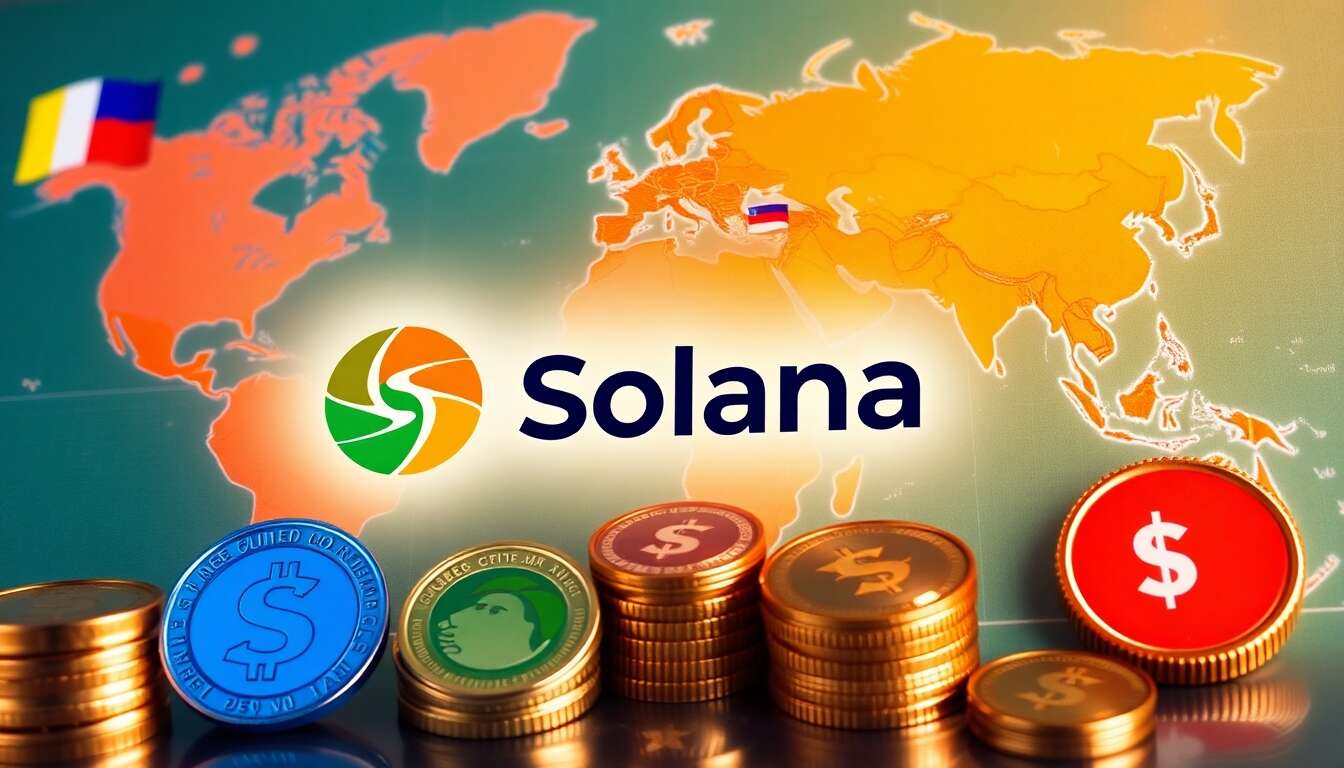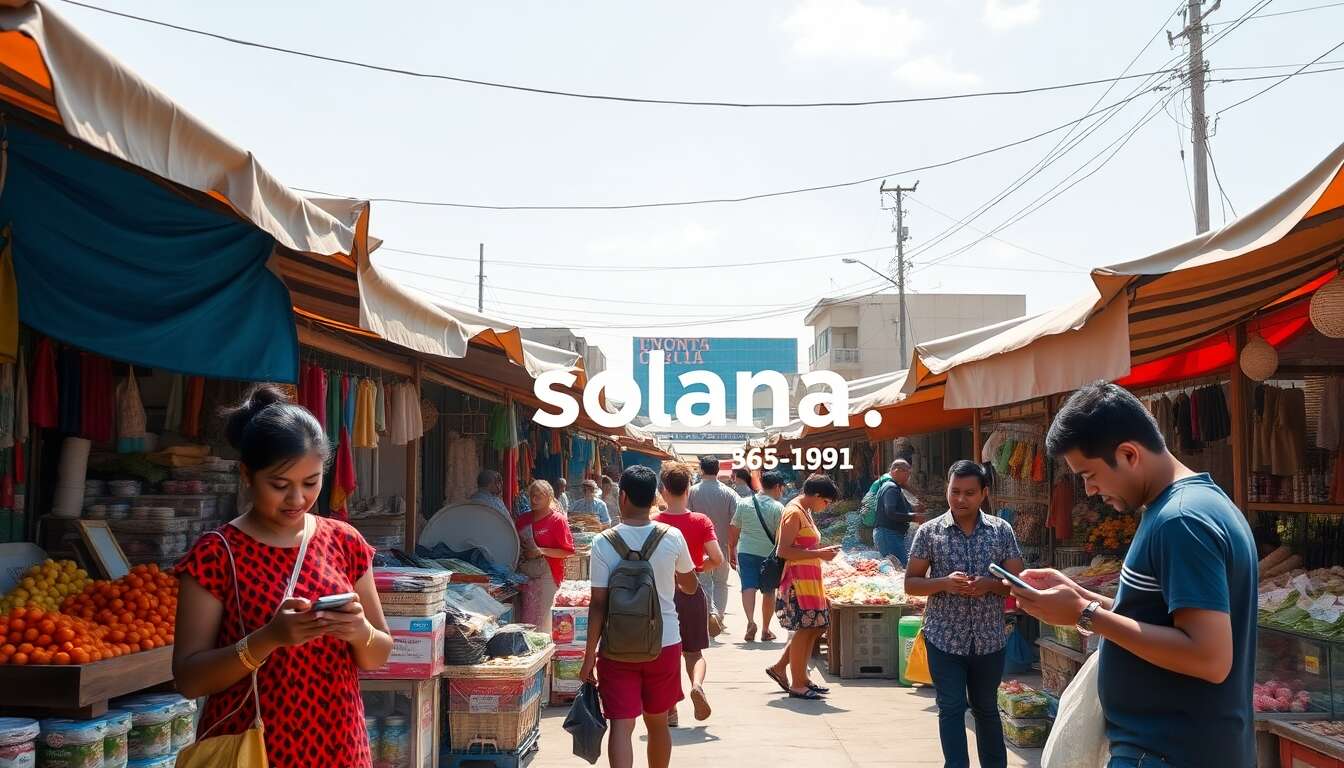Blockchain technology has transformed the landscape of digital finance, with various platforms offering unique solutions to global financial needs. Among these is Solana, a project that is rapidly gaining traction for its ability to provide efficient financial services, particularly to emerging economies. As the demand for decentralized and accessible financial solutions grows, understanding Solana’s role becomes increasingly critical.
Introduction to Solana: An Innovative Blockchain

The Genesis of Solana
Solana emerged on the blockchain scene as a highly efficient, fast, and low-cost platform. Its unique architecture, primarily the « Proof of History » mechanism, sets it apart from other blockchains. This innovation ensures that transactions are chronologically ordered, enhancing the speed and efficiency of processing. Initially developed by a team led by Anatoly Yakovenko, Solana quickly became recognized for its potential to surpass traditional financial networks.
Technical Milestones
Solana’s journey from conceptualization to full-scale implementation showcases numerous significant milestones. It began with the release of its white paper in 2017, leading to its official launch in March 2020. Since then, its infrastructure has supported a vast array of decentralized applications and services.
- 2017: White paper publication by Anatoly Yakovenko.
- 2018: Launch of Solana’s testnet.
- 2019: Raised significant funds, amassing tens of millions of dollars.
- March 2020: Official launch of Solana blockchain and its cryptocurrency SOL.
- June 2020: Establishment of the Solana Foundation.
Understanding these foundational elements sets the stage for exploring Solana’s tangible benefits to emerging markets.
Advantages of Solana for Emerging Economies

Cost Efficiency
Solana’s remarkable cost-effectiveness is one of its most significant advantages. Transaction fees are minimal, allowing for broader financial inclusivity. This feature is crucial for populations traditionally underserved by conventional banking systems.
Transaction Speed
Known for processing up to 65,000 transactions per second, Solana offers unprecedented speed. Such efficiency supports the economic infrastructures critical for developing economies, enabling them to build robust financial systems.
Financial Inclusivity
Solana plays a pivotal role in enhancing financial inclusion. By providing a platform for innovative financial solutions, such as decentralized applications (dApps), it empowers local initiatives and fosters entrepreneurship.
Sustainability
The sustainable infrastructure of Solana aligns with global environmental goals. Its energy-efficient model addresses the critiques often associated with cryptocurrency’s environmental impact.
Emerging Opportunities
Solana’s ecosystem supports the growing realms of decentralized finance (DeFi) and non-fungible tokens (NFTs), attracting investments and fostering economic growth in emerging regions.
Now that we have explored the potential advantages for developing regions, it is essential to delve deeper into how Solana’s ecosystem operates.
Understanding the Solana Ecosystem
Core Components
The Solana ecosystem is a complex network comprising multiple components that work in tandem to ensure seamless operations. Its core components include the validator nodes, ensuring network security, and the native token SOL, facilitating transactions.
Validator Nodes and Network Security
Validator nodes are crucial in maintaining the Solana blockchain’s integrity. These nodes process transactions and safeguard the network against potential breaches, ensuring a secure environment for users.
The Role of SOL Token
The SOL token serves as the lifeblood of the Solana network. It is used for transaction fees, staking, and governance, making it an indispensable part of the ecosystem. Its functionalities extend to powering various applications within the network.
Given these internal operations, the Solana blockchain sets the foundation for broad financial reach, further influencing global financial inclusion efforts.
The Impact of Solana on Financial Inclusion
Empowering Underbanked Populations
Solana’s low transaction costs and rapid processing empower underbanked populations by providing access to financial services previously unavailable. This expands economic opportunities and fosters self-sufficiency among communities.
Facilitating Micro-Transactions
The network’s ability to efficiently handle micro-transactions encourages economic activity at all levels. This capability supports small businesses and individual entrepreneurs in facilitating trade and transactions without financial barriers.
With its profound engagement in enhancing financial reach, we can compare Solana with other prominent cryptocurrencies to understand its unique positioning.
Comparing Solana with Other Cryptocurrencies

Solana vs. Ethereum
While both Solana and Ethereum offer blockchain solutions, they differ significantly in transaction speed, costs, and scalability. Solana edges out with faster transactions and lower costs, while Ethereum’s robust smart contract capabilities remain a dominant force.
| Criteria | Solana | Ethereum |
|---|---|---|
| Transaction Speed | Up to 65,000 TPS | 30 TPS |
| Transaction Cost | Minimal | Higher |
Solana vs. Bitcoin
Comparing Solana with Bitcoin highlights marked differences. Bitcoin, though a pioneer, processes transactions much slower and at higher costs. Solana’s technology offers a more financially and environmentally sustainable option suited for emerging economies.
These comparisons demonstrate Solana’s strategic advantages, guiding us to consider its future prospects in the economic arena.
Future Prospects for Solana in Emerging Economies
Technological Advancements
As Solana continues to advance technologically, its adoption is projected to rise. The ongoing development of its ecosystem supports growing demand for decentralized solutions tailored to emerging markets.
Regulatory Environment
Solana’s success will also depend on navigating regulatory challenges. Establishing compliant frameworks will bolster confidence and facilitate greater integration into national financial systems.
Adoption and Investment
With an increasing number of financial institutions and investors recognizing Solana’s potential, the platform is well-positioned for sustained growth. Investing in its ecosystem remains highly attractive.
Having considered the strategic outlook, let us briefly recount the key aspects discussed throughout this article.
Solana stands out as a promising platform for emerging economies due to its speed, cost-effectiveness, and contribution to financial inclusion. As we continue to witness the evolution of cryptocurrencies, Solana could significantly influence the economic development trajectories of developing nations.



